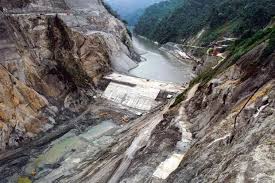Overlooking own concerns in past, Environment Ministry’s forest committee clears Arunachal’s Etalin hydel project

The Forest Advisory Committee (FAC) of India’s Environment Ministry recently approved the Etalin hydropower project in Arunachal Pradesh. This decision has sparked fresh debate over how to balance ecological preservation with development needs. While the approval marks a milestone for this ambitious hydroelectric project, many critics say important environmental and social concerns were overlooked or not fully addressed.
The Importance of the Etalin Hydel Project
The Etalin hydel project, located in the Dibang Valley of Arunachal Pradesh, aims to generate around 1,024 megawatts of clean electricity. It ranks among the largest hydroelectric projects planned in India’s northeast Himalayan region. The government sees it as a key resource to meet the country’s growing energy demands.
Hydropower provides a cleaner alternative to fossil fuels. It helps reduce carbon emissions and offers reliable energy. The government has promoted many hydro projects in the northeast, hoping they will spur economic growth and improve infrastructure.
Environmental Challenges and Earlier Concerns
Despite its benefits, the Etalin project has faced controversy for years. Environmentalists have warned about the damage it might cause to the region’s rich biodiversity. The Dibang Valley supports many species, including some endangered ones, and contains crucial wildlife habitats.
Earlier, the Forest Advisory Committee raised concerns about forest clearing and impacts on wildlife corridors. They also pointed out weak compensatory afforestation plans. Additionally, local tribal communities feared displacement and loss of their ancestral lands.
What Changed to Allow Approval?
The FAC approved the project after the developers submitted updated plans. These plans included new environmental management strategies and measures to reduce harm. The Ministry said these addressed previous objections.
The government also stressed the national importance of expanding renewable energy. They view hydroelectric projects like Etalin as critical to meeting climate goals and energy security. The northeast’s hydropower potential plays a key role in this vision.
Development vs. Ecology: A Difficult Balance
The Etalin clearance has revived debates about how India uses its natural resources. Hydropower contributes to clean energy, but large dams can impact forests and river ecosystems severely.
Critics argue that ignoring environmental risks may cause long-term damage. They call for stronger safeguards and independent impact studies. They also want real involvement of indigenous communities in decisions.
Finding a balance between growth and protecting nature remains a big challenge.
Voices from Local Communities
Many people living near Dibang Valley rely on forests for their daily needs. They worry about losing their homes and cultural heritage. Their voices have often been underrepresented.
Environmental groups demand transparent monitoring and respect for traditional knowledge. They urge the government to provide fair compensation to affected communities.
The Road Ahead: Responsible Development Needed
As construction begins, the government and developers must keep their promises. They need to protect local ecosystems and livelihoods while building the project.
Success depends on meeting energy goals without harming nature. Good planning and accountability will be essential.
Conclusion
The Forest Advisory Committee’s approval of the Etalin hydropower project is a key step for India’s renewable energy growth. However, the earlier environmental and social concerns that were overlooked call for caution.
Development should be truly sustainable. This means ongoing oversight and respectful engagement with local people. It also means protecting Arunachal Pradesh’s unique biodiversity and culture.
The Etalin project reminds us that India’s clean energy future requires careful planning. Growth and conservation must go hand in hand.






